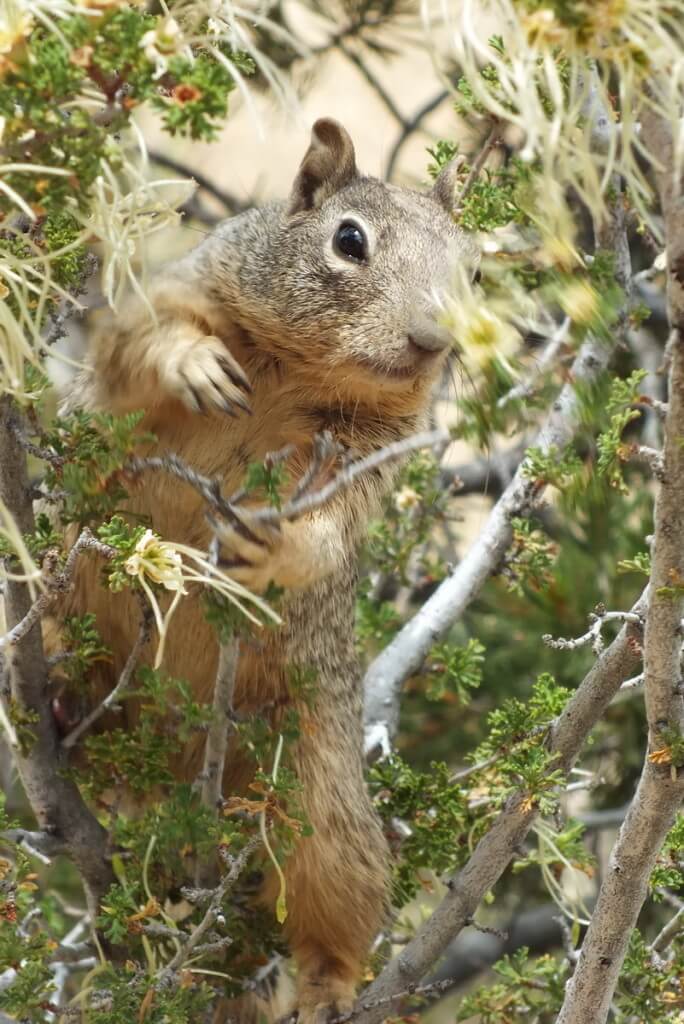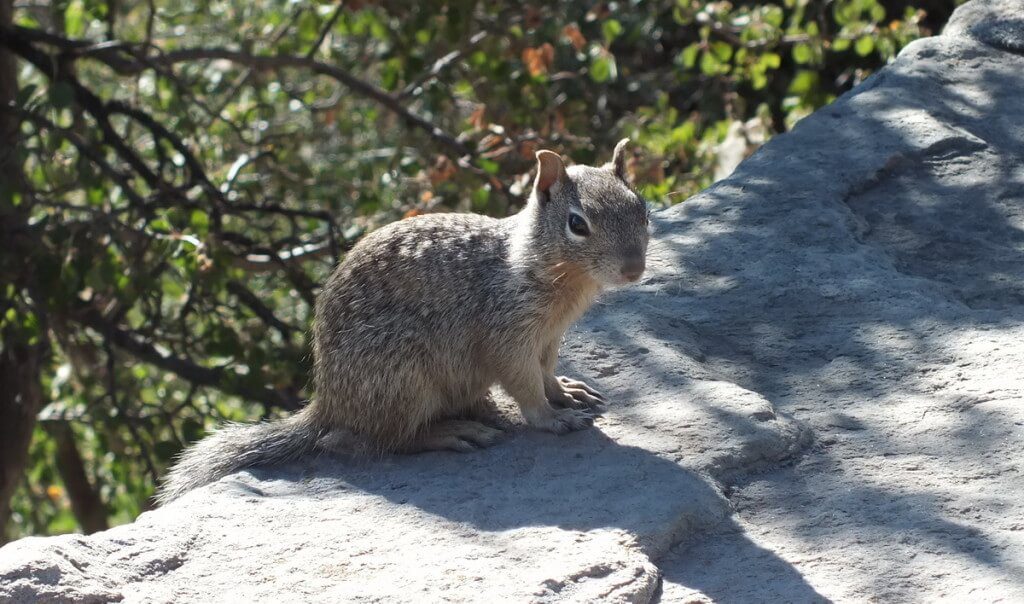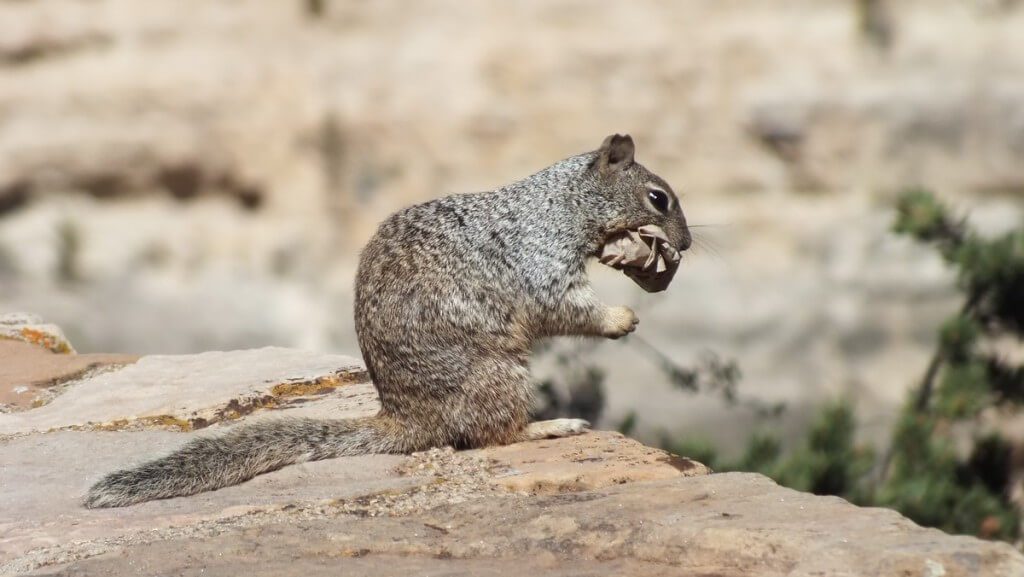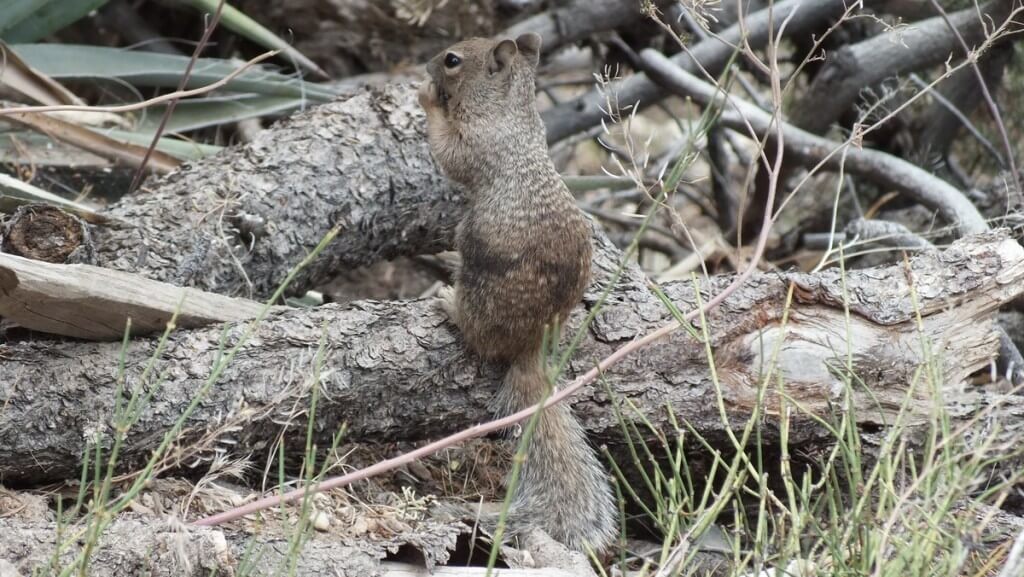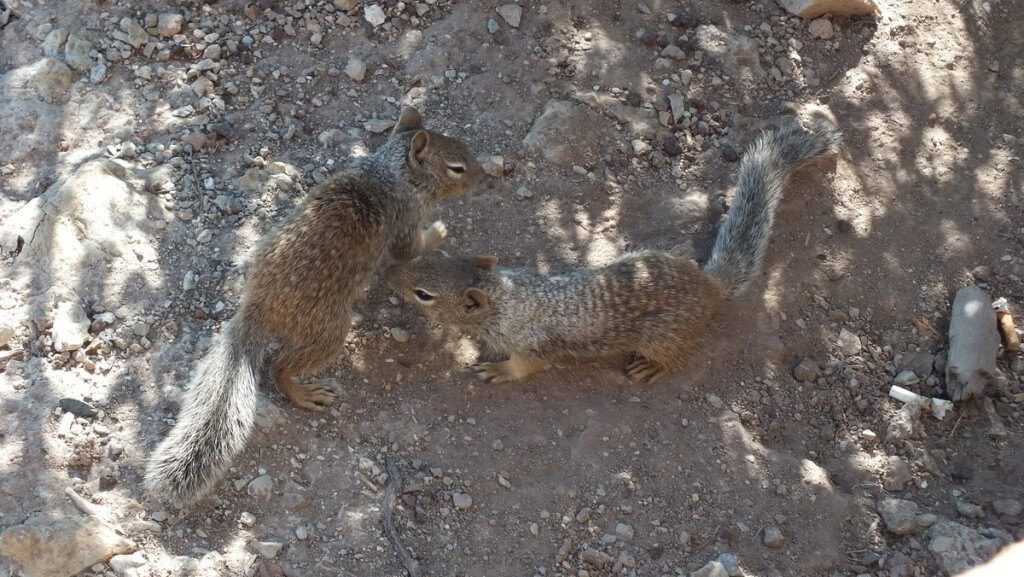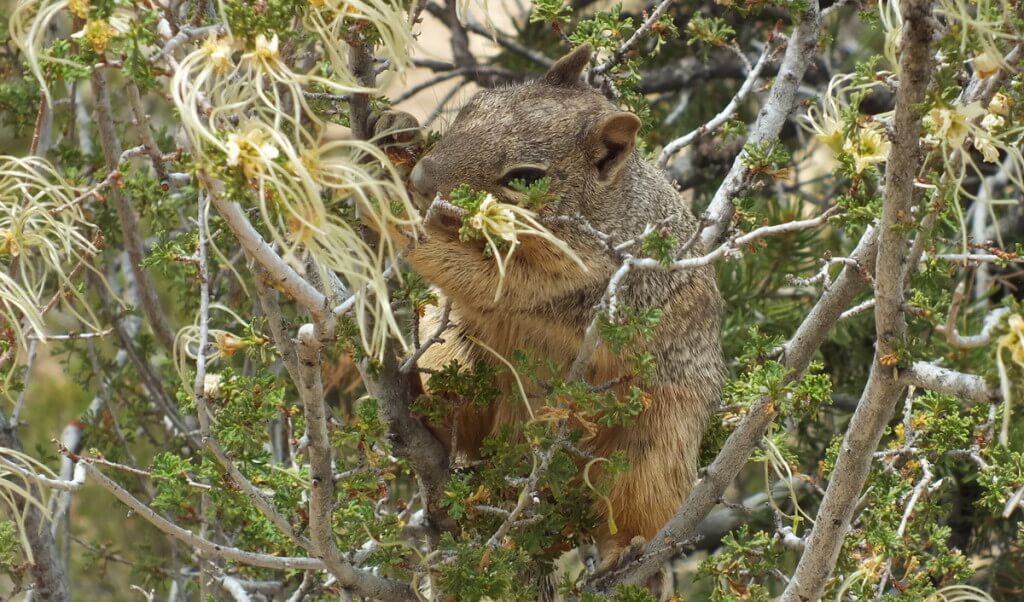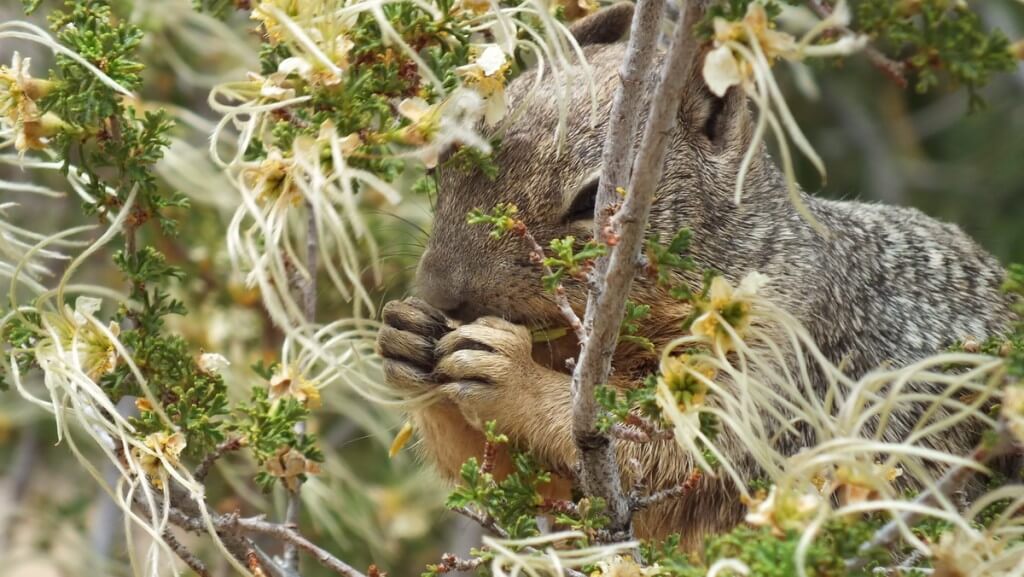Rock Squirrels at Grand Canyon National Park
Like in our own cities, conservation areas and parks here in Canada, squirrels are a common sight if not a nuisance at times, but we still love having them around. The same can be said for the Rock Squirrels at Grand Canyon National Park. The rodents are so plentiful and fun to see but still the Park’s staff warn visitors to be on the lookout for their bold behaviour!
One morning, as Bob and I waited near Bright Angel Lodge for a Fossil Walk to begin, this Rock Squirrel kept us company on the rock wall that separates pedestrians from the sheer cliff below. The Rock Squirrels at Grand Canyon National Park have become quite the pesky rodents owing, in large part, to the bad habits of humans who have insisted on feeding them.
As a consequence, Rock Squirrels throughout the Park have become habituated to the presence of people, come begging for food, and will unerringly slip into any unsealed backpack, bag, purse or satchel that is not sealed up tightly.
Rock Squirrels are the largest ground squirrels in their range. The fur or pelage of a Rock Squirrel is speckled greyish-brown on top becoming mottled along its back with a subtle wavy pattern that extends to its brownish rump. The fluffy tail is edged in white.
We could really see their resemblance to our own Grey Squirrels at home in Canada. As we observed this pair below one lookout, we had to laugh at their capers as they rolled and tumbled across the narrow ledge under the protection of some sparse shrubs.
On our first afternoon in Grand Canyon National Park, we rode a shuttle bus to the furthest western point on the Rim Trail at Hermit’s Rest.
Our explorations on the trail beyond the humble gift shop turned up another Rock Squirrel, this time in a Cliff Rose Bush right beside the pathway.
Rock Squirrels consume a wide variety of vegetative matter including fruits, nuts, roots, flowers, and cacti, as well as a small selection of invertebrates like earthworms, grasshoppers and beetles, but it surprised Bob and me to learn that they also will partake of small vertebrates like young Wild Turkeys and other bird species. Near the Grand Canyon, foods such as the flowers, buds and beans of mesquites, agaves and junipers play an important part in their food supply.
By sneaking up to the Cliff Rose plant, inside of which this Rock Squirrel was nestled, we had the privilege of watching it nip off and eat some tender blossoms and buds.
When at long last the Rock Squirrel became aware of our clicking camera, it poked its nose through the vegetation and acted surprised to see us there. We were within a mere couple of feet and had a marvelous view of its long ears and notable white eye ring, both characteristics of this species of squirrel. It was then time for us to move on.
Frame To Frame – Bob and Jean

